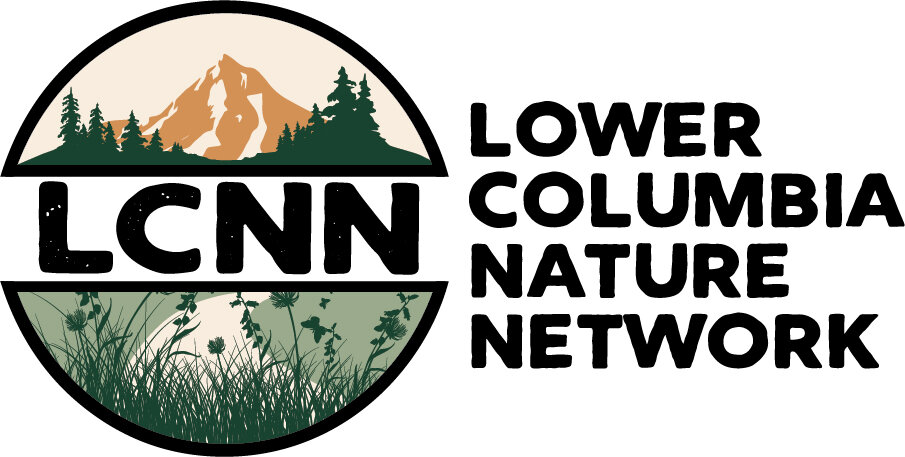Winter walks … winter’s wonder … lichen
Guest post from Ashley Conley, Educator, Water Resources Education Center - City of Vancouver
The sun appears at its lowest point in our sky as we move into the days around Winter Solstice. Rising 34 degrees south of east, it rides low in the winter sky, giving us less than 9 hours of light for all of December, and the first third of January. Shorter days beckon us to seize the moment and explore outside when the opportunity arises. With leaves down, hidden gems of nature take center stage. One such dazzling gem etched into the winter landscape is lichen.
Lichen is often confused with moss, as they both are found in similar environments, often growing side by side. Both can be found growing on bark, draped on branches, or wrapped around rocks. Moss, however, are ancient non-vascular plants, classified as bryophytes. They have no roots, collect the moisture and minerals they need through rainwater, and reproduce by spores instead of flowers.
Lichen are completely different organisms. In fact, they are not even plants. They are a symbiotic relationship between a fungus and algae or cyanobacteria. The fungus provides the structure while the algae and cyanobacteria are capable of photosynthesis, thereby providing the lichen with its food. Lichen is often described as fungi that have discovered agriculture. Most species of lichen (60%) in our region are a combination of fungus and green algae, but current research has shown that some species can have more than one fungal component and can contain both algae and cyanobacteria.
The Pacific Northwest is rich in lichen biodiversity with over 1000 species identified. As you become familiar with lichens, you can start to classify them into 3 main growth forms: foliose, fruticose, and crustose. Foliose lichens are flat and “leafy”. They have a distinct upper and lower surface, often resembling lettuce or curly kale. Fruticose lichens are three dimensional and branching, often defined as “shrubby” lichens. They attach to the substrate at one point and branch out. Some classic PNW fruticose lichens have pendant hair-like or cup-like structures. Crustose lichens are just that, “crusty”. They from a thin crust on the surface of rocks, bark, and soil and come in many vibrant colors.
Lichen are special for myriad reasons. They play diverse and important roles in the functioning of a healthy ecosystem. Lichens provide habitat, food, and shelter for a variety of organisms including mammals, birds, insects and tardigrades. They can “fix” atmospheric nitrogen so that it is useable by plants. Lichen are pioneer species, colonizing rocks and assisting in the chemical weathering processes. Acidic secretions by the lichen slowly break down the rock, thereby creating soil. And perhaps most importantly, they act as environmental monitors and are key indicator species for air pollution. Many lichens are intolerant of poor air quality and only grow in areas with clean air. With the spread of the urbanized landscape, monitoring of lichen species can show how changes in air quality materialize over time. Observation of these sensitive species can help us change our behavior to help preserve the natural landscape.
Whether you enjoy rainy walks or prefer to wait for those precious breaks in the cloud cover, enjoy these darker winter days by immersing into the world of lichen. Chartreuse and flame orange, emerald greens and rich browns, their colors pop against the gray blue skies of winter. Various shapes and textures call out to be gently touched, bringing our attention to the micro level. Lichen grows all around us, in dense urban landscapes and deep forested areas. A slow pace and a keen eye are all you need to start enjoying their beauty.








